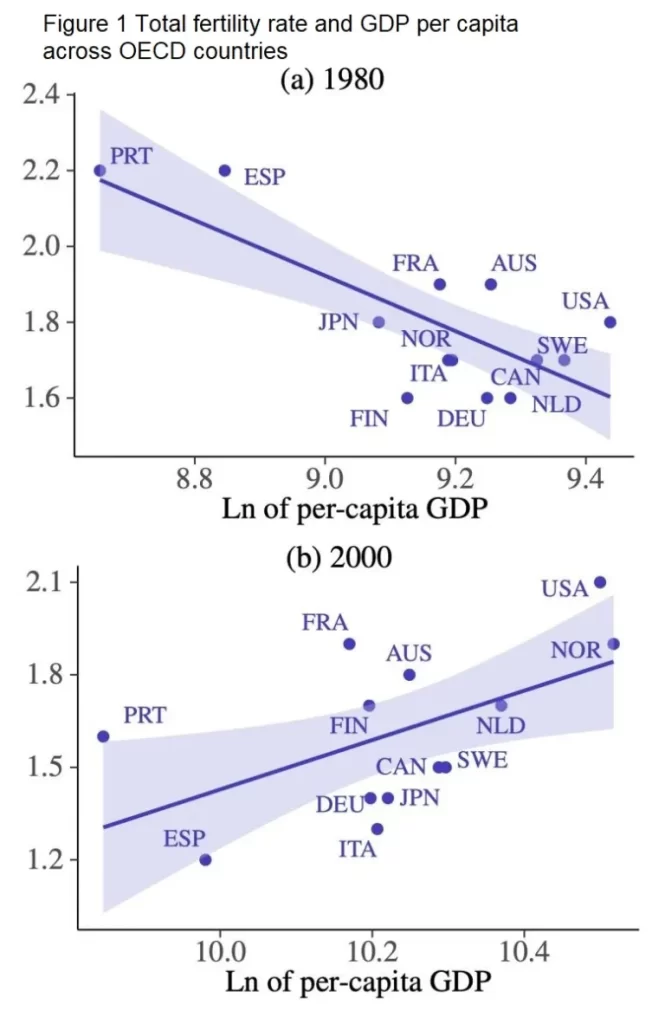Monday, August 15, 2022
A Fertility Patterns Flip-flop
From Conversable Economist:
“For some decades now, the world has been following the patterns of a demographic transition with life expectancies rising and birth rates falling, as we head for a world where the elderly are a much larger share of the global population. However, Matthias Doepke, Anne Hannusch, Fabian Kindermann, and Michèle Tertilt argue that it’s time for “The New Economics of Fertility” (IZA Discussion Paper #15224, April 2022). For a short readable overview of the main themes, you can check their shorter discussion at the VoxEU website (June 11, 2022).
From the abstract of the academic paper, the authors write:
In this survey, we argue that the economic analysis of fertility has entered a new era. First-generation models of fertility choice were designed to account for two empirical regularities that, in the past, held both across countries and across families in a given country: a negative relationship between income and fertility, and another negative relationship between women’s labor force participation and fertility. The economics of fertility has entered a new era because these stylized facts no longer universally hold. In high-income countries, the income-fertility relationship has flattened and in some cases reversed, and the cross-country relationship between women’s labor force participation and fertility is now positive.
A couple of pictures may help, here. It used to be that countries with higher incomes had lower fertility rates, but among high-income countries, this pattern no longer holds. Here’s a figure taken from the VoxEU overview. The top panel shows that within the group of high-income countries in 1980, countries with higher per capita GDP had lower fertility, but by 2000, countries in this group with higher per capita income had higher fertility.”
Continue reading here.

Posted by at 6:09 AM
Labels: Macro Demystified
Subscribe to: Posts